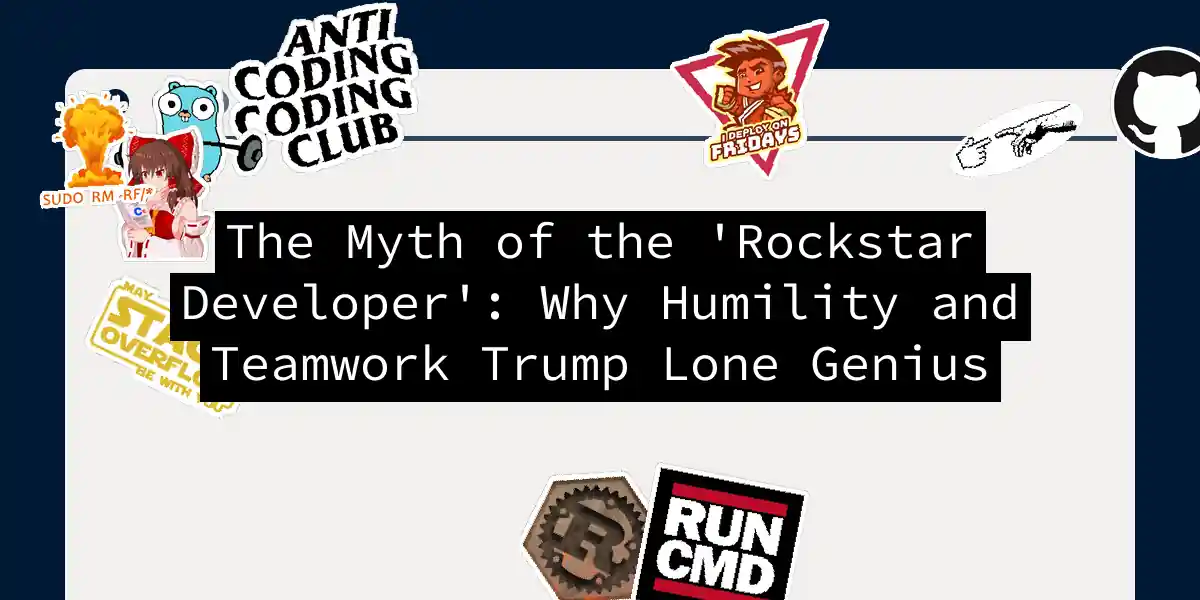Let me tell you about the time I tried to be a coding Bruce Springsteen. Picture this: 3 AM, energy drinks stacked like Jenga towers, me hammering out code to “fix” a colleague’s “subpar” implementation. Two days later, my “brilliant” refactor caused a production outage that made our error logs look like a Tinder feed for exception classes. That’s when I learned rockstar developers belong on stage - not in software teams.
Why We Keep Falling for Guitar Solo Coding
The rockstar myth persists because it’s seductive. We’ve all seen movies where a hoodied genius types furiously while “sudo rm -rf /” floats in the air like some digital incantation. Reality? More like:
# Actual production code from my first "solo masterpiece"
def calculate_interest(amount):
# TODO: Handle compound interest
return amount * 0.05 # Magic number? It's fine, I'm a rockstar!
The problem isn’t skill - it’s the delusion of solitary brilliance. Research shows software projects fail at alarming rates when built around “hero” developers. Why? Because:
- Knowledge silos become single points of failure
- Bus factor approaches 1 (if the rockstar gets hit by a bus…)
- Team morale plummets faster than a racecar in a reverse gear factory
The Collaboration Multiplier Effect
Let’s visualize why teams outperform lone wolves:
This isn’t theoretical. When we switched to mob programming at my last startup, we:
- Reduced production incidents by 40%
- Cut onboarding time for new hires from 3 weeks to 4 days
- Accidentally created a CI/CD pipeline that could survive a zombie apocalypse
Practical Team Coding Alchemy
Step 1: Kill Your Ego (But Keep Your Keyboard)
# Better than sudo rm -rf /
git checkout -b feature/your-idea
# Instead of force pushing your "genius"
git push --set-upstream origin feature/your-idea
Step 2: Implement Code Chemistry
- Pair Programming: Like a three-legged race with keyboards
- PR Templates with:
- Impact analysis section
- “What Could Go Wrong” checklist
- Blame-Free Postmortems: Where we roast code, not people
Step 3: Build a Humility-Driven Development Cycle
When Humility Meets Velocity
That time I admitted “I don’t know how Kubernetes works” led to:
- A team knowledge share session
- Documented infrastructure patterns
- A monitoring dashboard that actually made sense Contrast this with my early rockstar days when “I got this” meant:
// True story from 2017
function encryptData(data) {
return btoa(data); // What's encryption anyway?
}
The New Developer Virtues
- Teachability > Genius: “How would you approach this?” beats “Here’s the solution”
- Curiosity > Certitude: “Let’s experiment” replaces “I’m right”
- Generosity > Glory: Sharing credit builds trust faster than any hackathon win The most impactful code I’ve written wasn’t clever algorithms - it was the documentation that helped 12 developers understand the system. Not sexy? Maybe. But unlike my solo rockstar code, it’s still running in production today. So put down the air guitar. The real magic happens when we code in chorus, not solo. After all, even Beyoncé has backup dancers - and our PR reviews could use some formation changes.
